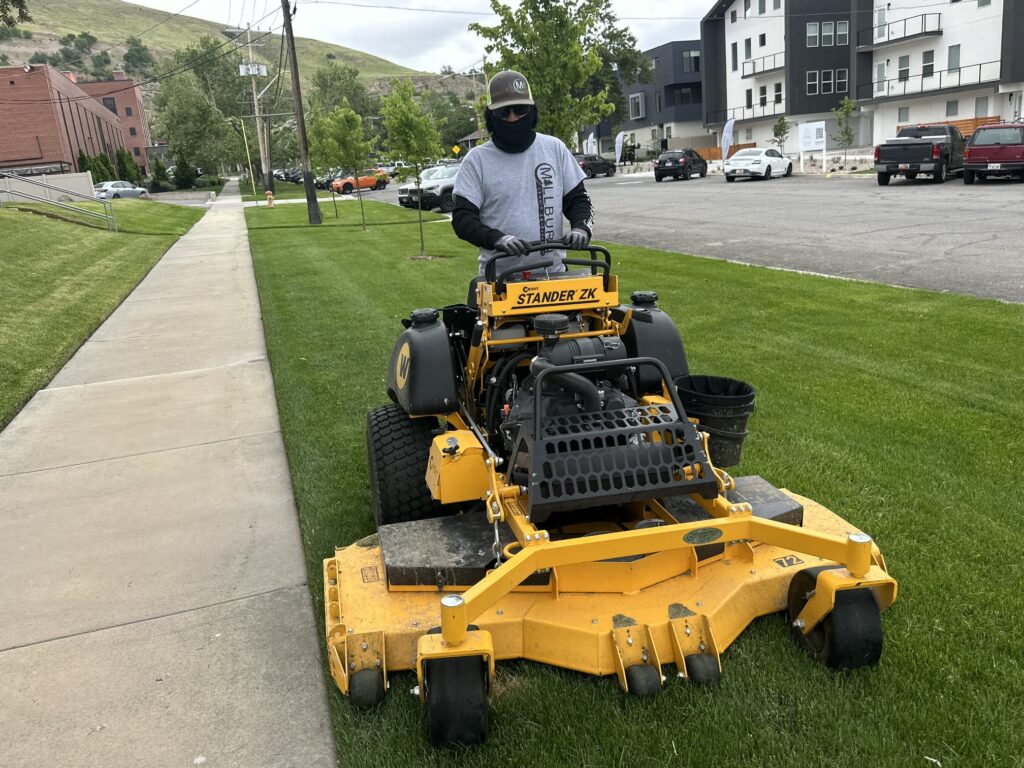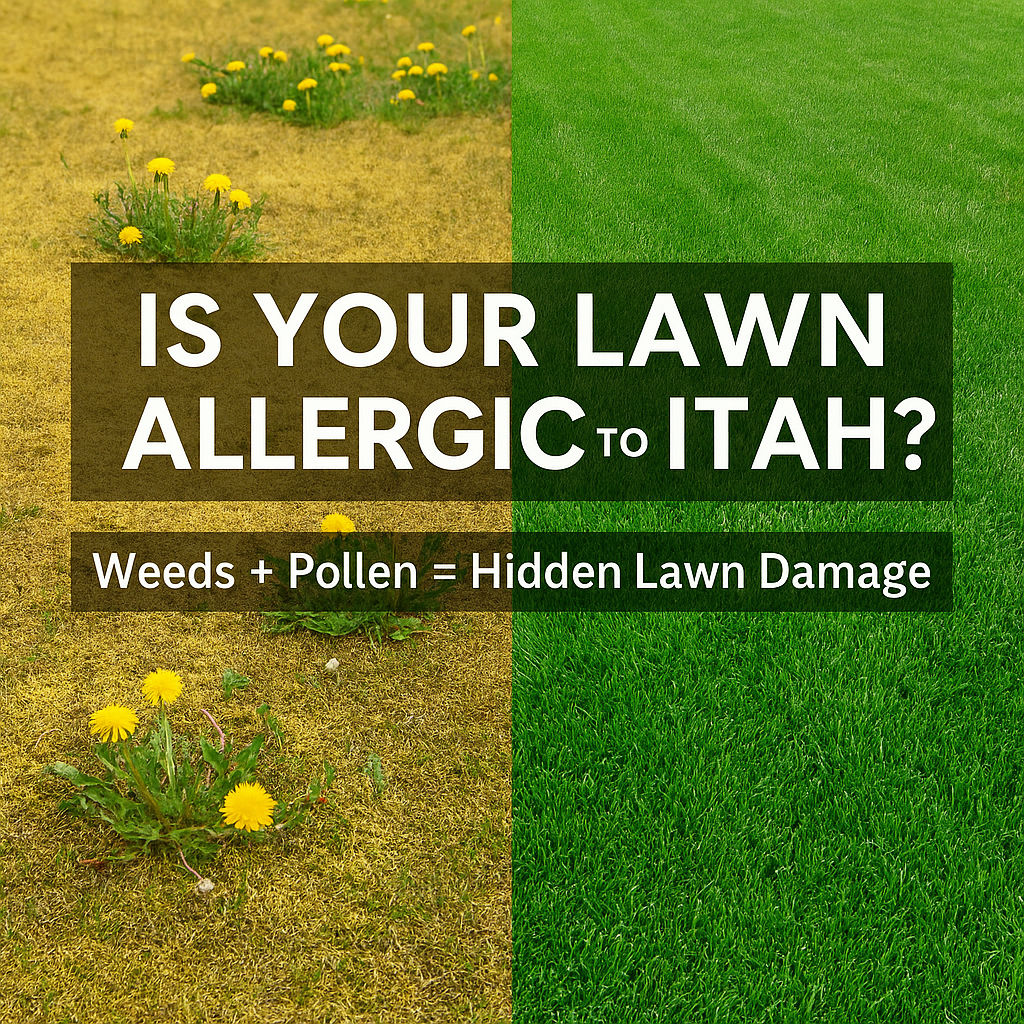Your Lawn Might Be Struggling for the Same Reason You Are
If you live in Saratoga Springs, Utah, you know spring and summer come with itchy eyes, sneezing fits, and clouds of pollen. But did you know your lawn could be suffering from allergies, too?
While your grass doesn’t sneeze, it absolutely reacts to local pollen, invasive weeds, and airborne allergens. These environmental stressors contribute to lawn thinning, discoloration, and even fungal infections—especially when combined with Utah’s dry, high-altitude climate.
Let’s break down how Utah’s allergens affect your lawn and what you can do about it.
Weeds: The Allergic Reaction Trigger You Didn’t See Coming
Common Utah weeds like ragweed, dandelion, and kochia produce aggressive pollens that don’t just float into your lungs—they settle on your turf. These weeds:
- Compete with your grass for nutrients and water
- Disrupt root systems and compact soil
- Increase the risk of fungus and pest invasions
- Create “hotspots” of allergen concentration on your property
💡 Pro tip: Regular mowing and early weed control in the spring helps reduce pollen load and prevent spread.
Pollen Smothers Grass Growth
In high-pollen seasons, you’ll often notice a dusty yellow layer coating cars—and yes, your lawn. Here’s what that does to your turf:
- Clogs turf blades and prevents proper sunlight absorption
- Encourages mold and mildew, especially during humid evenings
- Creates a blanket that traps heat, stressing your grass further
This is especially problematic during Utah’s spring winds and late summer pollen bursts, which carry allergens from neighboring areas.
Saratoga Springs Soil Conditions Don’t Help
Utah’s alkaline, often compacted soils can magnify the issue:
- Weeds thrive in poor soil, worsening their spread
- Compacted soil traps pollen and reduces turf drainage
- Grass already struggling with heat and drought has less immunity to external stressors
Aeration and compost-based topdressing help relieve these issues and build resilience in your lawn.
What You Can Do: Local Solutions for a Unique Problem
- Schedule early-season lawn mowing and weed treatment.
Start before weeds flower and release pollen—March and April are key months in Saratoga Springs. - Mow more frequently during peak pollen months.
Keeping your grass at a healthy height prevents weed germination and allows airflow that reduces mold. - Rinse your lawn with water during high pollen days.
A quick evening spray helps remove surface pollen—but don’t overdo it and risk fungal issues. - Use pre-emergent and post-emergent weed control.
Target ragweed, thistle, and spurge early before they choke out your turf. - Improve soil health.
Compost and aeration once or twice a year reduces compaction and gives your lawn a better immune system against environmental triggers.

Get Professional Help for Allergy-Proof Lawn Care
At SaratogaMowing.com, we specialize in Saratoga Springs lawn mowing services that work with the local climate, not against it. We know the weeds and allergens by name—and how to beat them before they sabotage your yard.
📞 Call us today to schedule your first mow + weed treatment combo and breathe easier—literally and visually.
FAQs
Q: Can pollen actually harm grass or just settle on it?
A: Pollen can block sunlight, clog blades, and encourage mold if not rinsed or removed. Over time, this weakens turf and invites disease.
Q: What are the worst Utah weeds for lawn health?
A: Ragweed, kochia, dandelions, and Canada thistle are common offenders. They’re aggressive, allergenic, and thrive in poor soil.
Q: How do I tell if my lawn issues are from pollen or poor watering?
A: Look for dust-like coatings on the blades or sudden browning during high pollen days. We can help with diagnosis and a plan.
Q: Can I mow during high pollen days?
A: Yes, but wear a mask if you’re sensitive, and consider rinsing your lawn after to wash off excess pollen and allergens.


